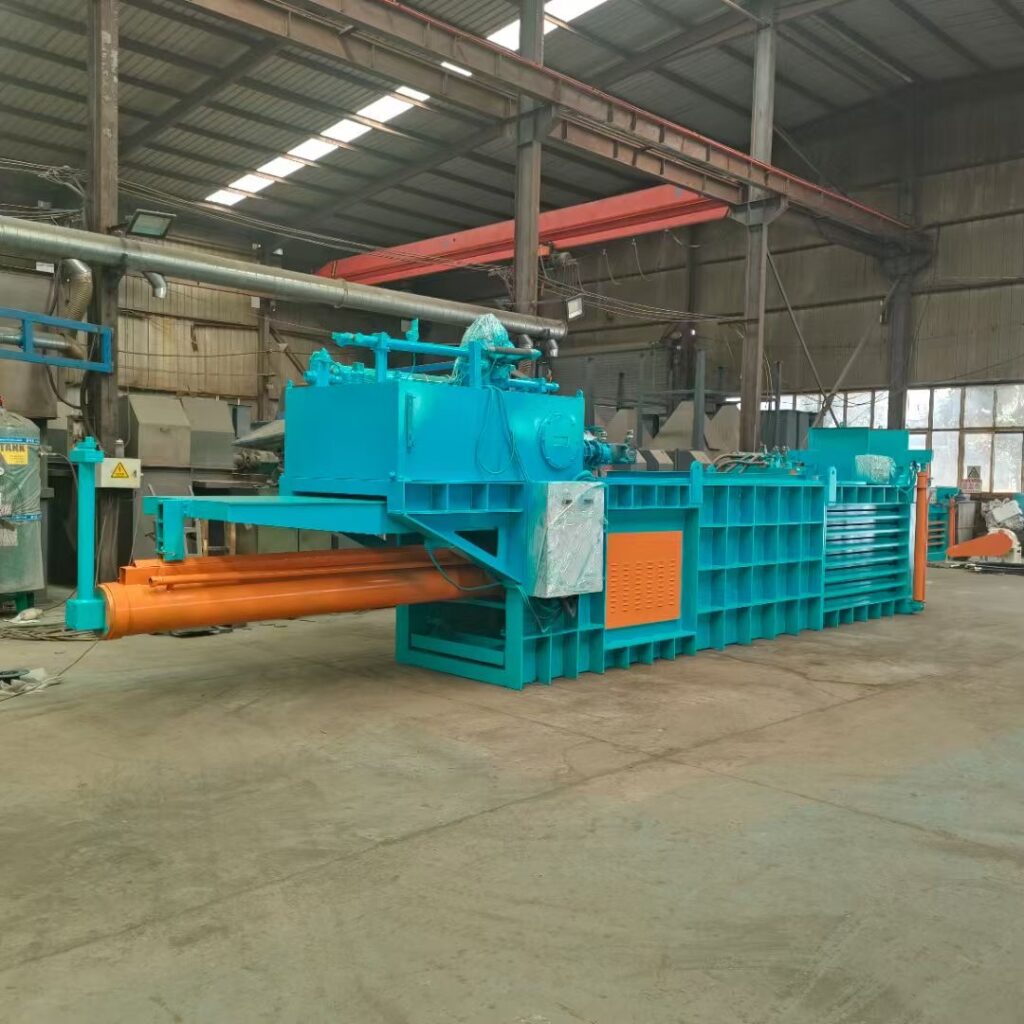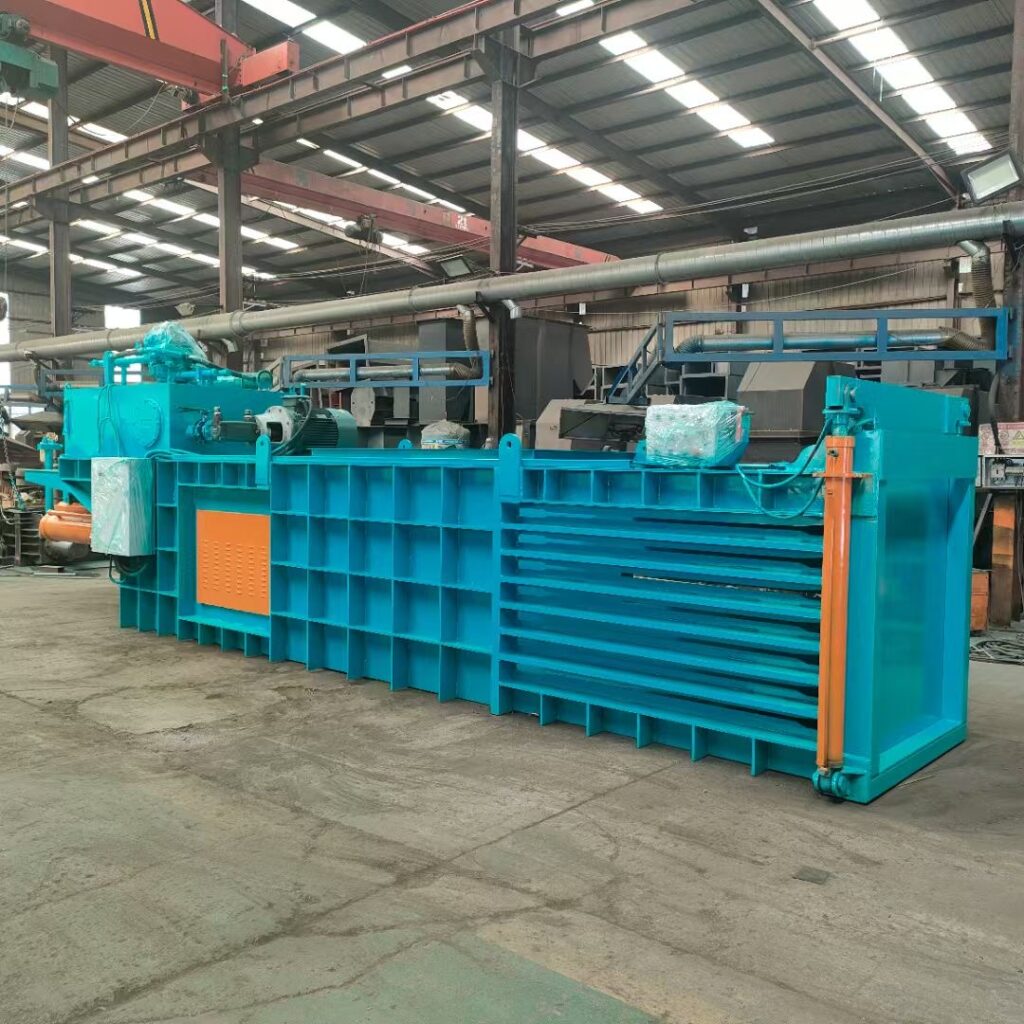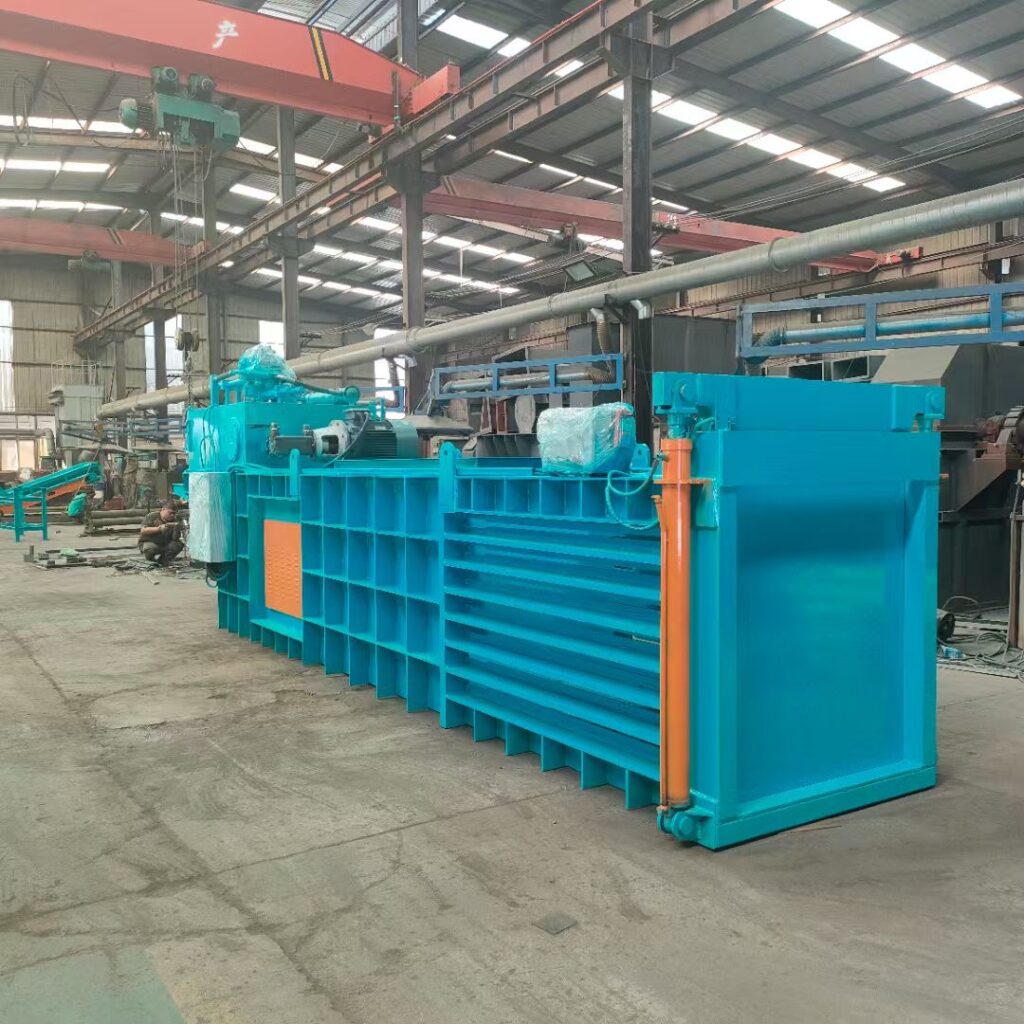What is a horizontal baler?

A horizontal baler is a hydraulic compaction machine designed to compress recyclable materials—such as waste paper, cardboard, plastic film, PET bottles, textile waste, metal scraps, and agricultural straw—into dense, uniform bales for easier handling, storage, and transportation.
Unlike vertical balers, which apply pressure from top to bottom, horizontal balers compress materials side-to-side, making them ideal for high-volume operations. They are commonly found in recycling centers, paper mills, printing facilities, packaging factories, and plastic processing plants.
Many horizontal balers are equipped with conveyor belts for automatic feeding, which significantly improves efficiency and reduces labor requirements. Models are generally classified into semi-automatic (manual strapping required) and fully automatic (featuring automatic strapping, wire cutting, and bale ejection). They can also differ in their compression systems—ranging from single-cylinder to dual-cylinder and even advanced multi-cylinder configurations—to match various capacity and material needs.
Key advantages include high efficiency, large bale output, consistent bale size, and seamless integration into automated waste processing lines, making them a crucial asset in modern waste management and recycling industries.
Why use a horizontal baler?

A horizontal baler offers multiple benefits that make it a smart investment for any business handling large volumes of recyclable materials:
-
Maximized Efficiency – Designed for medium to large-scale operations, these machines process significantly more material than vertical balers.
-
Space & Cost Savings – By reducing waste volume by 80–90%, companies can cut storage and transportation costs dramatically.
-
Cleaner, Safer Workspaces – Compressing loose waste prevents clutter and reduces safety hazards.
-
Automation for Higher Productivity – Automatic feeding, strapping, and bale ejection minimize manual labor and speed up processing.
-
Consistent Bale Quality – Each bale meets uniform size and density standards, ensuring easier resale or further processing.
-
Environmental Responsibility – Supporting recycling efforts helps reduce landfill waste, meet regulations, and enhance a company’s green image.
Horizontal balers come in different capacities and configurations—single-cylinder, dual-cylinder, and fully automatic—allowing businesses to choose the most suitable solution for their production needs.
How to use a horizontal baler?

Operating a horizontal baler involves a series of safety-focused, efficient steps:
-
Preparation
-
Ensure the baler is correctly installed, powered, and all safety guards are in place.
-
Check hydraulic oil levels and perform basic maintenance as per the manufacturer’s guidelines.
-
-
Loading Materials
-
Place recyclables—paper, cardboard, plastics—onto the conveyor belt or directly into the feeding chamber.
-
In automatic systems, the conveyor continuously feeds materials into the compression chamber.
-
-
Compression & Strapping
-
Start the baling cycle from the control panel.
-
Hydraulic cylinders compress the materials into a dense bale.
-
In fully automatic balers, the strapping system secures the bale with wire or plastic straps.
-
In semi-automatic models, strapping is done manually.
-
-
Bale Ejection & Handling
-
The bale ejector pushes the completed bale out for storage or transport.
-
Remove and store the bale in a designated area.
-
-
Safety & Maintenance
-
Always keep hands, clothing, and tools away from moving parts.
-
Wear personal protective equipment (PPE).
-
Conduct routine inspections of hydraulic systems, straps, sensors, and blades.
-
Proper training ensures operators can maximize output while maintaining a safe and productive work environment.
In Summary:
A horizontal baler streamlines recycling, reduces costs, boosts productivity, and supports sustainability goals. For any company generating large amounts of recyclable waste, it’s not just a machine—it’s a strategic investment.
